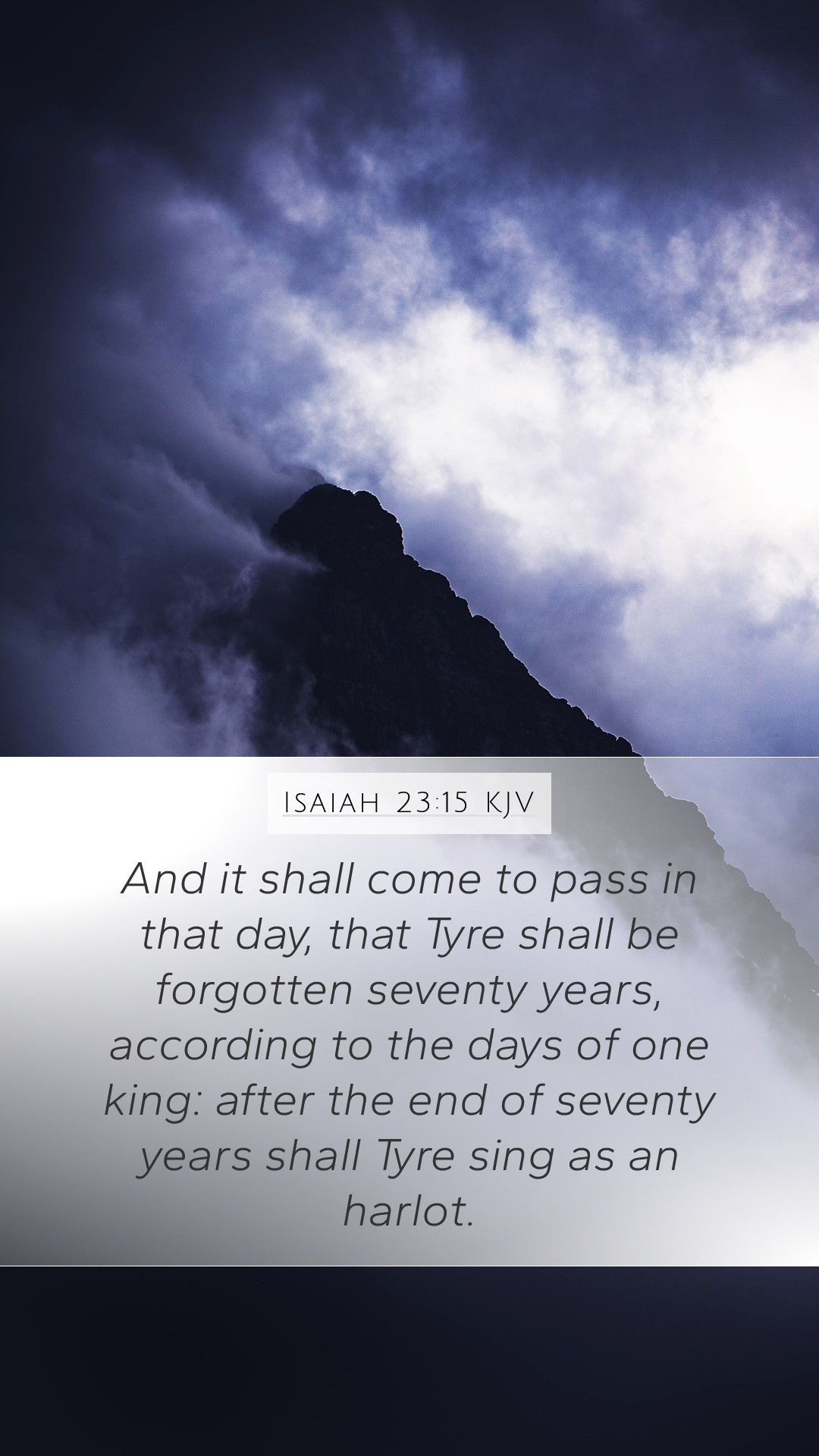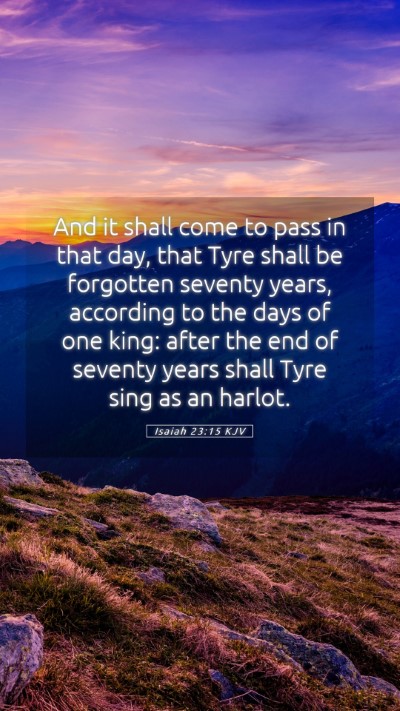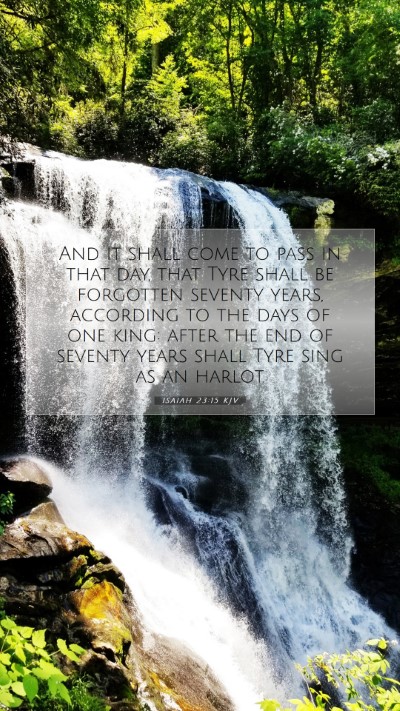Understanding Isaiah 23:15
This scripture presents a significant insight into the themes of judgment and restoration within the Book of Isaiah. In Isaiah 23:15, it reads: “And it shall come to pass in that day, that Tyre shall be forgotten seventy years, according to the days of one king: after the end of seventy years shall Tyre sing as an harlot.” This verse encapsulates the prophecy concerning Tyre, a prominent city known for its mercantile strength and prosperity.
Bible Verse Meanings
From a biblical perspective, Tyre symbolizes human pride and economic power, and its downfall is a warning against reliance on material wealth. The seventy years mentioned correlate with a period of divine judgment during which Tyre would be rendered desolate. However, the promise of eventual restoration offers hope and emphasizes God's sovereignty over nations.
Bible Verse Interpretations
The interpretations of this verse can be viewed in several contexts:
- Historical Context: The specifics of Tyre's historical judgment are tied to the Babylonian captivity and the subsequent return to the land. The “seventy years” reflects the time frame associated with Israel’s exile.
- Symbolic Meaning: Tyre represents the ultimate futility of human endeavors apart from God’s guidance. The “harlot” imagery denotes moral and spiritual corruption.
- Future Prophecy: Some interpretations view this verse as prophetic of an eventual restoration of God’s people and the city itself, signifying redemption and the renewal of covenant promises.
Bible Verse Commentary
Matthew Henry notes that the "seventy years" denotes a complete period of judgment, after which Tyre would regain its glory but in a different manner, illustrating the transformative power of God’s judgment leading to eventual restoration.
Albert Barnes emphasizes that the “song of the harlot” indicates a return to former practices that may reflect both repentance from past sins or a disregard for the lessons of divine judgment. This duality serves as a cautionary tale.
Adam Clarke elaborates on the figurative language and the implications of a nation changing its ways after facing destruction, suggesting that this reflects God’s ability to restore what was once lost, but may also indicate the dangers of falling back into sin.
Bible Study Insights
When conducting a Bible study on Isaiah 23:15, consider the following insights:
- Application of Historical Context: Investigate the history of Tyre and its significance in biblical times to understand the text more deeply.
- Relevance Today: Reflect on how reliance on modern "Tyres" (corporate entities, nations) affects our spiritual lives and relationship with God.
- Lessons of Humility: Explore the importance of humility before God as opposed to self-reliance and pride in human achievements.
Significance of Isaiah 23:15
This verse serves a fundamental role in biblical exegesis and scripture analysis, highlighting key themes such as:
- God's Sovereignty: The prophetic judgment illustrates the overarching control God has over nations and empires.
- Human Nature: The cycle of sin, judgment, and restoration is a recurring theme in Scripture, demonstrating God’s enduring mercy despite human failings.
- Hope of Restoration: Readers are encouraged to see beyond the immediate desolation to the possibilities of renewal and redemption after repentance.
Cross References to Consider
- Jeremiah 25:11 - Discusses the prophecy of destruction and captivity.
- Ezekiel 26:12 - Mentions the destruction of Tyre and its riches.
- Isaiah 13:22 - Relates to the comprehensive judgment of nations.
Conclusion
In closing, Isaiah 23:15 illustrates profound truths about God's judgment and mercy, encouraging readers to engage in Bible study groups or online Bible study tools to further explore its meanings and implications. Understanding scripture like this equips believers with biblical study insights valuable for personal growth and effective application in daily life.


